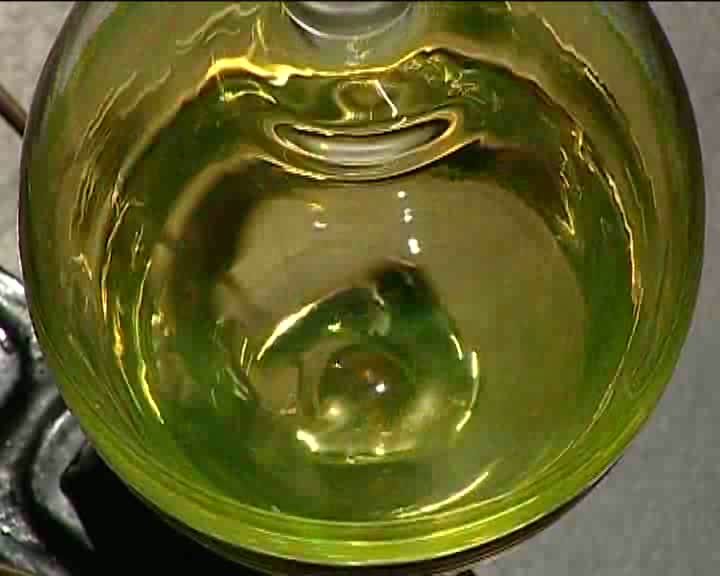„Centrifugál szeparátor” változatai közötti eltérés
A Fizipedia wikiből
| 6. sor: | 6. sor: | ||
A centrifugál szeparátor modellje: Egy üveggömbben színezett víz, alatta higany helyezkedik el. Az üveggömb függőleges szimmetriatengelye körül forgatható. A fordulatszám növelésével mindkét folyadék egyre magasabbra jut, szabad felületük a gravitáció és a centrifugális erők eredőjére merőleges lesz. | A centrifugál szeparátor modellje: Egy üveggömbben színezett víz, alatta higany helyezkedik el. Az üveggömb függőleges szimmetriatengelye körül forgatható. A fordulatszám növelésével mindkét folyadék egyre magasabbra jut, szabad felületük a gravitáció és a centrifugális erők eredőjére merőleges lesz. | ||
| − | = Centrifugal separator | + | == Centrifugal separator == |
| − | + | ||
| − | + | ||
The model of the centrifugal separator. In a glass bowl colored water is poured on top a layer of mercury. The bowl can be rotated around its vertical symmetry axis. With increasing speed of rotation both fluids will rise, and their free surface will be perpendicular to the resultant of the gravitational and centrifugal forces. | The model of the centrifugal separator. In a glass bowl colored water is poured on top a layer of mercury. The bowl can be rotated around its vertical symmetry axis. With increasing speed of rotation both fluids will rise, and their free surface will be perpendicular to the resultant of the gravitational and centrifugal forces. | ||
</wikitex> | </wikitex> | ||
A lap 2013. április 18., 15:07-kori változata
Az elhangzó szöveg
A centrifugál szeparátor modellje: Egy üveggömbben színezett víz, alatta higany helyezkedik el. Az üveggömb függőleges szimmetriatengelye körül forgatható. A fordulatszám növelésével mindkét folyadék egyre magasabbra jut, szabad felületük a gravitáció és a centrifugális erők eredőjére merőleges lesz.
Centrifugal separator
The model of the centrifugal separator. In a glass bowl colored water is poured on top a layer of mercury. The bowl can be rotated around its vertical symmetry axis. With increasing speed of rotation both fluids will rise, and their free surface will be perpendicular to the resultant of the gravitational and centrifugal forces.
